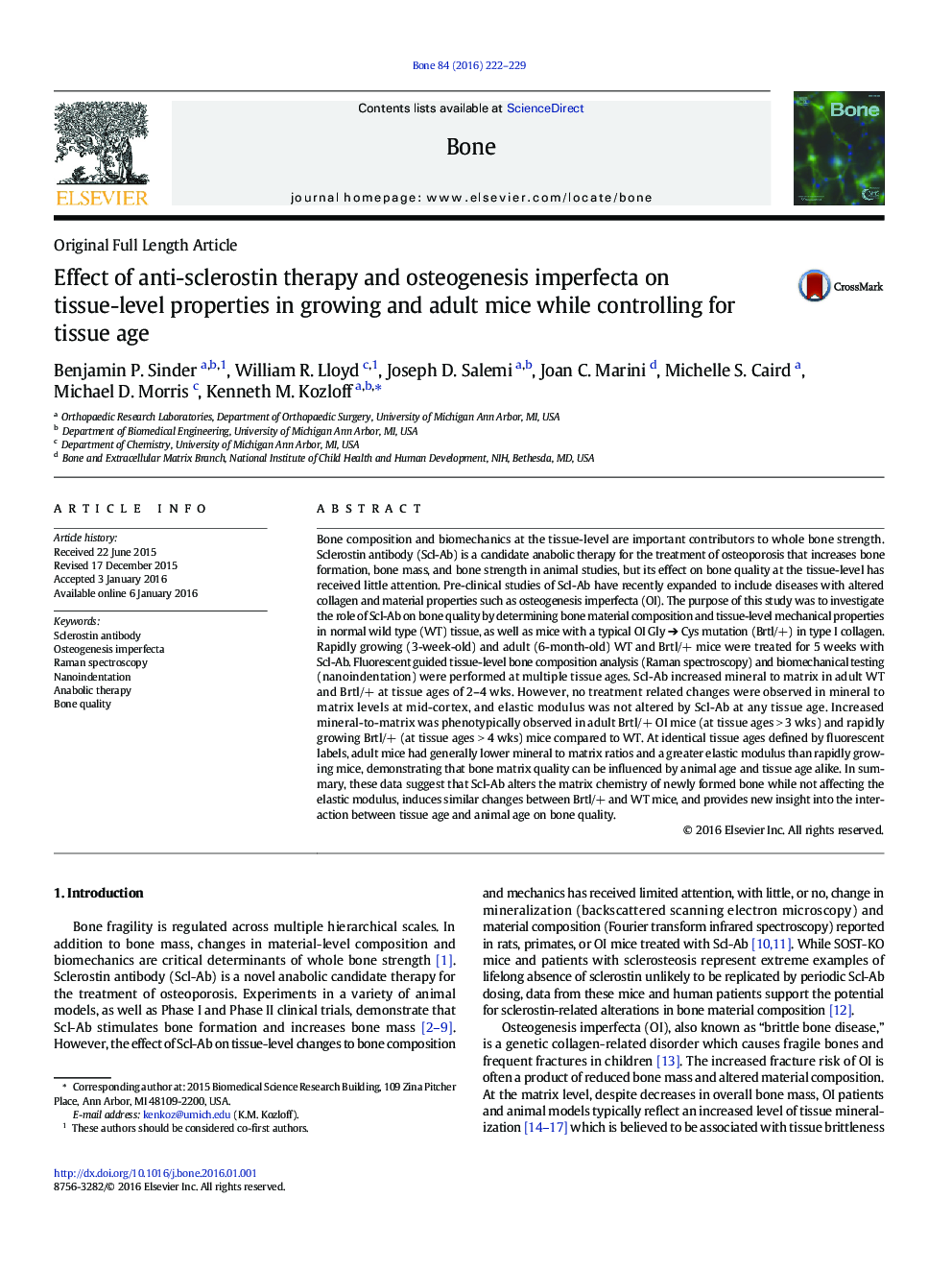| Article ID | Journal | Published Year | Pages | File Type |
|---|---|---|---|---|
| 5889434 | Bone | 2016 | 8 Pages |
â¢Sclerostin antibody effects on bone composition and tissue level biomechanics were assessed in a mouse model of osteogenesis imperfecta.â¢Tissue age was controlled for by sequential fluorochrome labeling in young and adult mice undergoing treatment.â¢Sclerostin antibody increased mineral-to-matrix ratios in adult and young mice at some tissue ages.â¢Sclerostin antibody did not change tissue elastic modulus.â¢Mouse age influences matrix composition and elastic modulus independent of tissue age.
Bone composition and biomechanics at the tissue-level are important contributors to whole bone strength. Sclerostin antibody (Scl-Ab) is a candidate anabolic therapy for the treatment of osteoporosis that increases bone formation, bone mass, and bone strength in animal studies, but its effect on bone quality at the tissue-level has received little attention. Pre-clinical studies of Scl-Ab have recently expanded to include diseases with altered collagen and material properties such as osteogenesis imperfecta (OI). The purpose of this study was to investigate the role of Scl-Ab on bone quality by determining bone material composition and tissue-level mechanical properties in normal wild type (WT) tissue, as well as mice with a typical OI Gly â Cys mutation (Brtl/+) in type I collagen. Rapidly growing (3-week-old) and adult (6-month-old) WT and Brtl/+ mice were treated for 5 weeks with Scl-Ab. Fluorescent guided tissue-level bone composition analysis (Raman spectroscopy) and biomechanical testing (nanoindentation) were performed at multiple tissue ages. Scl-Ab increased mineral to matrix in adult WT and Brtl/+ at tissue ages of 2-4 wks. However, no treatment related changes were observed in mineral to matrix levels at mid-cortex, and elastic modulus was not altered by Scl-Ab at any tissue age. Increased mineral-to-matrix was phenotypically observed in adult Brtl/+ OI mice (at tissue ages > 3 wks) and rapidly growing Brtl/+ (at tissue ages > 4 wks) mice compared to WT. At identical tissue ages defined by fluorescent labels, adult mice had generally lower mineral to matrix ratios and a greater elastic modulus than rapidly growing mice, demonstrating that bone matrix quality can be influenced by animal age and tissue age alike. In summary, these data suggest that Scl-Ab alters the matrix chemistry of newly formed bone while not affecting the elastic modulus, induces similar changes between Brtl/+ and WT mice, and provides new insight into the interaction between tissue age and animal age on bone quality.
